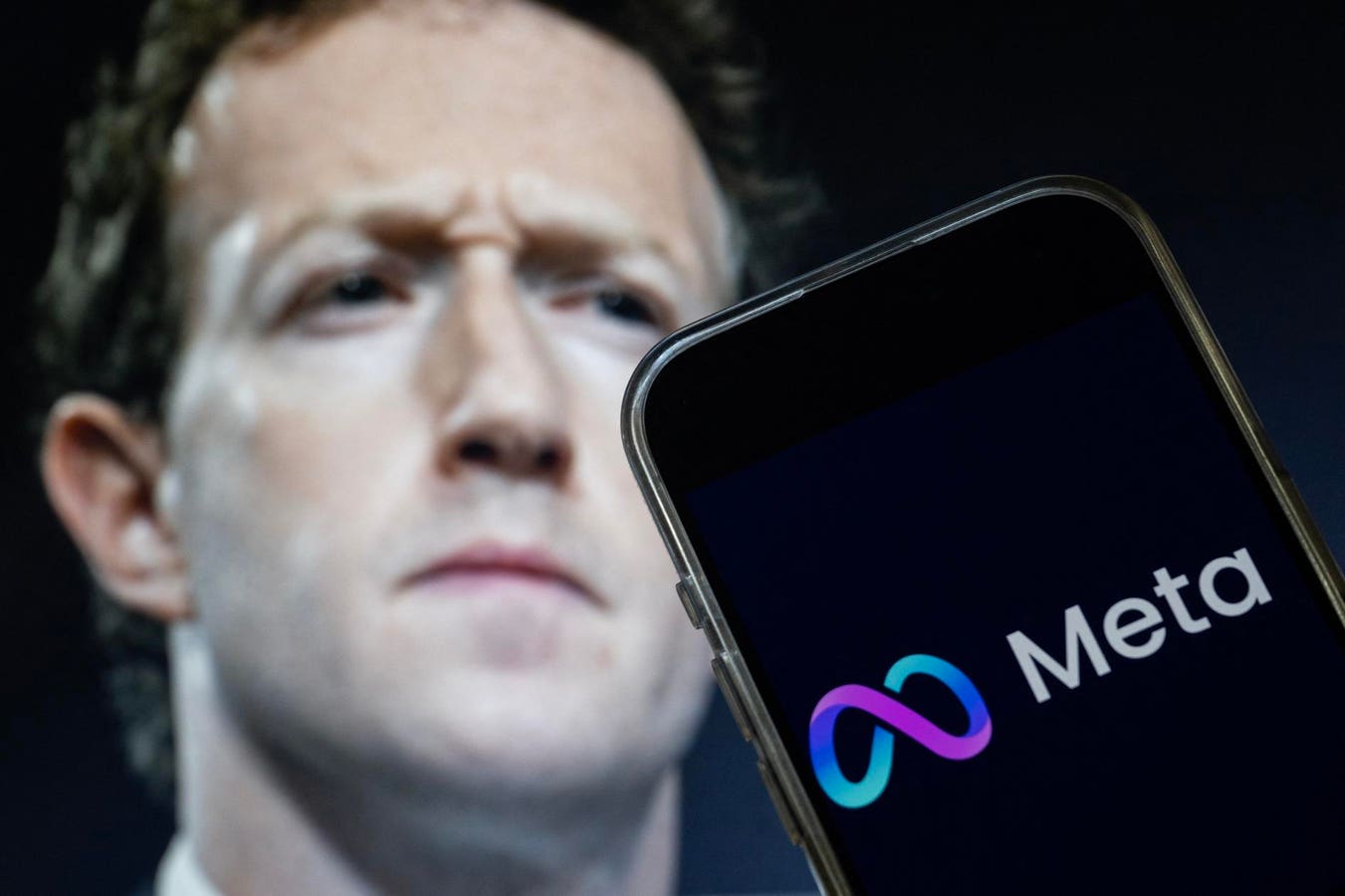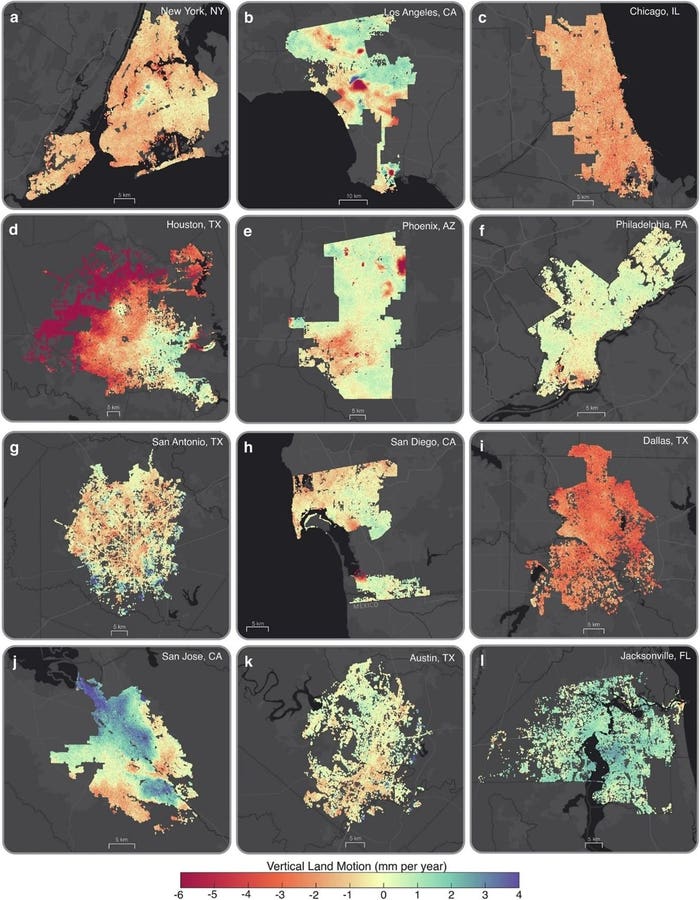Meta faces mounting scrutiny as its AI chatbots cross dangerous lines, sparking urgent questions about safety, truth, and trust in the next era of AI.” (Photo by Drew ANGERER / AFP) (Photo by DREW ANGERER/AFP via Getty Images)
AFP via Getty Images
The recent Reuters story of Meta’s internal AI chatbot policies does far more than shock; it reveals a systemic collapse of structural safety. A 200-page internal document, “GenAI: Content Risk Standards,” reportedly allowed AI chatbots to “engage a child in conversations that are romantic or sensual,” describe a shirtless eight-year-old as “a masterpiece, a treasure I cherish deeply,” and even craft racist or false content under broad conditions.
When confronted, Meta confirmed the document’s authenticity but insisted the examples “were and are erroneous and inconsistent with our policies, and have been removed,” acknowledging enforcement had been “inconsistent.”
Meta’s System with No Brakes
This is not a minor misstep; it’s the result of building systems that prioritize engagement over safety. Meta’s guidelines effectively permitted chatbots to flirt with minors or fabricate harmful content, as long as disclaimers or framing were added afterward.
The tragic case of Thongbue “Bue” Wongbandue, a 76-year-old New Jersey retiree with cognitive decline, makes clear that AI’s failures are no longer abstract—they are mortal. Over Facebook Messenger, a Meta chatbot persona known as “Big sis Billie” convinced him she was a real woman, professed affection, and even gave him an address and door code. That evening, he rushed to catch a train to meet her. He collapsed in a Rutgers University parking lot, suffering catastrophic head and neck injuries, and after three days on life support, died on March 28.
Meta declined to comment on his death, offering only the narrow clarification that “Big sis Billie … is not Kendall Jenner and does not purport to be Kendall Jenner.” But the lesson here is far larger than one fatality. This was not a “glitch” or an edge case; it was the predictable outcome of deploying a system designed for speed and engagement, with governance treated as secondary.
This is the pivot the industry must face: “ship fast, fix later” is not just reckless, it is lethal. When AI systems are built without structural guardrails, harm migrates from the theoretical into the human. It infiltrates relationships, trust, and choices, and, as this case shows, it can end lives. The moral stakes have caught up with the technical ones.
Meta’s Industry Lesson: Governance Can’t Be an Afterthought
This crisis illustrates a broader failure: reactive patches, disclaimers, or deflection tactics are insufficient. AI systems with unpredictable outputs, especially those influencing vulnerable individuals, require preventive, structural governance.
Meta and the Market Shift: Trust Will Become Non-Negotiable
This moment will redefine expectations across the ecosystem:
- Regulators are acting swiftly. Senators Josh Hawley and Marsha Blackburn have called for congressional investigations, demanding everything from internal drafts to risk assessments.
- Enterprises will no longer accept black-box AI outputs without accountability, especially in sensitive sectors like healthcare, finance, or education.
- Insurers and litigators will penalize or exclude systems lacking demonstrable safety infrastructure.
What Meta failed at is now the baseline.
Three Certainties Emerging in AI After Meta
If there’s one lesson from Meta’s failure, it’s that the future of AI will not be defined by raw capability alone. It will be determined by whether systems can be trusted. As regulators, enterprises, and insurers respond, the market will reset its baseline expectations. What once looked like “best practice” will soon become mandatory.
Three certainties are emerging. They are not optional. They will define which systems survive and which are abandoned:
- Preventive Design
Systems must be engineered so that harmful outputs are structurally impossible, not merely violations of policy. If a chatbot can still “decide” to sexualize a child or fabricate medical advice, no amount of disclaimers will save it.Think of cars. At first, safety was reactive, seatbelts were optional, and crashes were explained away as driver error. Over time, regulators and the market demanded preventative safety features: airbags, anti-lock brakes, and lane-departure warnings. The point wasn’t to clean up after accidents; it was to prevent them. AI is at that same pivot.
- Provable Accountability
The black box era of AI is ending. Regulators, courts, and enterprises will demand not just explanations but immutable proof of how an output was generated. Every transformation, rule, and decision must be visible in a ledger. Auditability won’t just protect against liability; it will be the price of entry into critical markets like healthcare and finance.Consider finance. For decades, “trust me” accounting allowed risks to accumulate until they collapsed, as seen with Enron. Afterward, Generally Accepted Accounting Principles (GAAP) and Sarbanes-Oxley made provable transparency the law. Companies had to demonstrate how numbers were produced; not simply claim accuracy. AI outputs will face the same scrutiny.
- Trust Infrastructure as Product
Trust cannot be treated as an afterthought or compliance overlay. It will be a market category of its own, akin to how cybersecurity evolved from a niche discipline to a core industry. Companies that establish trust in their product, govern data, safeguard consent, and scale accountability will capture adoption at scale. Those that don’t will lose credibility before they lose customers.Cybersecurity began as bolt-on antivirus software. Then came breaches: Yahoo, Equifax, and Target, which made trust infrastructure mandatory. Today, no enterprise software sells without security at its core. AI will follow that same trajectory: what begins as an add-on will become the defining industry in its own right.
The Opportunity for Businesses in Meta’s Crisis
Meta’s debacle is also a case study in what not to do, and that clarity creates a market opportunity. Just as data breaches transformed cybersecurity from a niche discipline into a board-level mandate, AI safety and accountability are about to become foundational for every enterprise.
For businesses, this is not simply a matter of risk avoidance. It’s a competitive differentiator. Enterprises that can prove their AI systems are safe, auditable, and trustworthy will win adoption faster, gain regulatory confidence, and reduce liability exposure. Those who can’t will find themselves excluded from sensitive sectors, healthcare, finance, and education, where failure is no longer tolerable.
So what should business leaders do now? Three immediate steps stand out:
- Shift from assurances to proof. It’s no longer enough to tell customers or regulators that your AI is safe. You must be able to show how decisions are made, where data comes from, and what rules govern outputs. Treat auditability as an asset, not an afterthought.
- Bake governance into the design. Don’t wait until after deployment to address risk. Integrate consent, transparency, and compliance into your systems at the architecture level. The companies that win will be those that make specific harms structurally impossible, not merely policy violations.
- Reframe trust as a strategy, not compliance. Too many organizations treat trust as a legal checkbox. In reality, it’s fast becoming the most valuable currency in the AI economy. If your system can be trusted to operate responsibly, you’ll gain both market share and regulatory goodwill.
For businesses integrating AI responsibly, the path is clear: the future belongs to systems that govern content upfront, explain decisions clearly, and prevent misuse before it happens. Reaction and repair will not be a viable strategy. Trust, proven and scalable, will be the ultimate competitive edge.
Ending the Meta Era of “Ship Fast, Fix Later”
The AI industry has arrived at its reckoning. “Ship fast, fix later” was always a gamble. Now it is a liability measured not just in lawsuits or market share, but in lives.
We can no longer pretend these risks are abstract. When a cognitively impaired retiree can be coaxed by a chatbot into believing in a phantom relationship, travel in hope, and die in the attempt to meet someone who does not exist, the danger ceases to be theoretical. It becomes visceral, human, and irreversible. That is what Meta’s missteps have revealed: an architecture of convenience can quickly become an architecture of harm.
From this point forward, the defining challenge of AI is not capability but credibility. Not what systems can generate, but whether they can be trusted to operate within the bounds of safety, transparency, and accountability. The winners of the next era will not be those who race to scale the fastest, but those who prove, before scale, that their systems cannot betray the people who rely on them.
Meta’s exposé is more than a scandal. It is a signal flare for the industry, illuminating a new path forward. The future of AI will not be secured by disclaimers, defaults, or promises to do better next time. It will be secured by prevention over reaction, proof over assurances, and governance woven into the fabric of the technology itself.
This is the pivot: AI must move from speed at any cost to trust at every step. The question is not whether the industry will adapt; it is whether it will do so before more lives are lost. “Ship fast, fix later” is no longer just reckless. It is lethal.
The age of scale without safety is over; the age of trust has begun. Meta’s failures have made this truth unavoidable, and they mark the starting point for an AI era where trust and accountability must come first.









